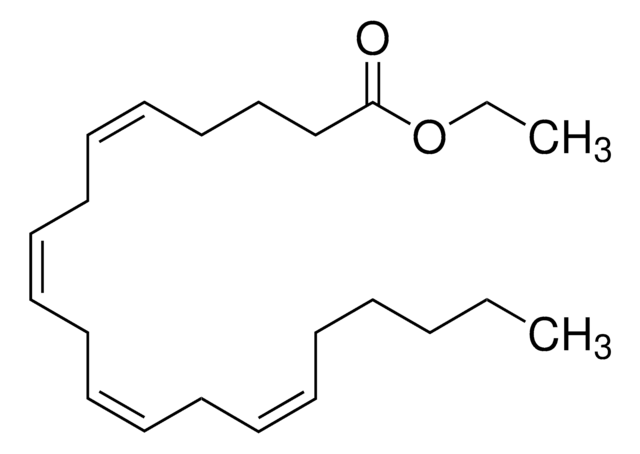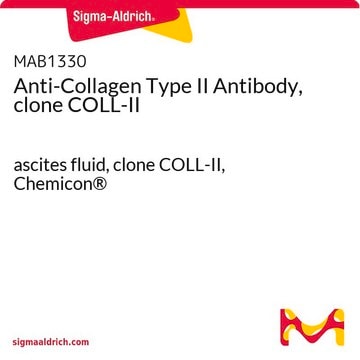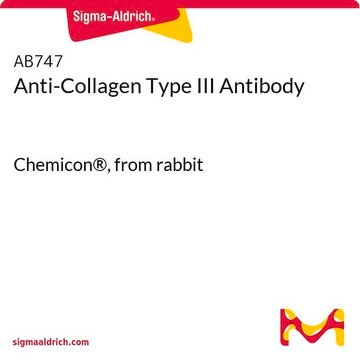AB761
Anti-Collagen Type II (COL2A1) Antibody
CHEMICON®, rabbit polyclonal
Sinónimos:
Anti-Anti-ANFH, Anti-Anti-AOM, Anti-Anti-COL11A3, Anti-Anti-SEDC, Anti-Anti-STL1
About This Item
Productos recomendados
Nombre del producto
Anti-Collagen Type II Antibody, Chemicon®, from rabbit
origen biológico
rabbit
Nivel de calidad
forma del anticuerpo
affinity isolated antibody
tipo de anticuerpo
primary antibodies
clon
polyclonal
purificado por
affinity chromatography
reactividad de especies
human
fabricante / nombre comercial
Chemicon®
técnicas
ELISA: suitable
immunocytochemistry: suitable
immunohistochemistry: suitable
western blot: suitable
Nº de acceso NCBI
Nº de acceso UniProt
Condiciones de envío
wet ice
modificación del objetivo postraduccional
unmodified
Información sobre el gen
human ... COL2A1(1280)
Especificidad
Cross Reactivity Percent
Human collagen type II 90%
Human collagen type I, III, IV, V <1%
Human plasma proteins do not interfere with binding to collagen.
Inmunógeno
Aplicación
Indirect immunofluorescence on cryostat sections or cultured cells 1:10-1:20
Western Blot 1:100
Optimal working dilutions must be determined by the end user.
Cell Structure
ECM Proteins
Forma física
Product is liquid in 0.15M sodium chloride, 10mM sodium phosphate pH 7.5 with 0.1% mannitol and 0.1% dextran as stabilizers. No preservative.
Almacenamiento y estabilidad
Información legal
Cláusula de descargo de responsabilidad
¿No encuentra el producto adecuado?
Pruebe nuestro Herramienta de selección de productos.
Palabra de señalización
Danger
Frases de peligro
Consejos de prudencia
Clasificaciones de peligro
Repr. 1B
Código de clase de almacenamiento
6.1D - Non-combustible acute toxic Cat.3 / toxic hazardous materials or hazardous materials causing chronic effects
Clase de riesgo para el agua (WGK)
WGK 2
Punto de inflamabilidad (°F)
Not applicable
Punto de inflamabilidad (°C)
Not applicable
Certificados de análisis (COA)
Busque Certificados de análisis (COA) introduciendo el número de lote del producto. Los números de lote se encuentran en la etiqueta del producto después de las palabras «Lot» o «Batch»
¿Ya tiene este producto?
Encuentre la documentación para los productos que ha comprado recientemente en la Biblioteca de documentos.
Nuestro equipo de científicos tiene experiencia en todas las áreas de investigación: Ciencias de la vida, Ciencia de los materiales, Síntesis química, Cromatografía, Analítica y muchas otras.
Póngase en contacto con el Servicio técnico









